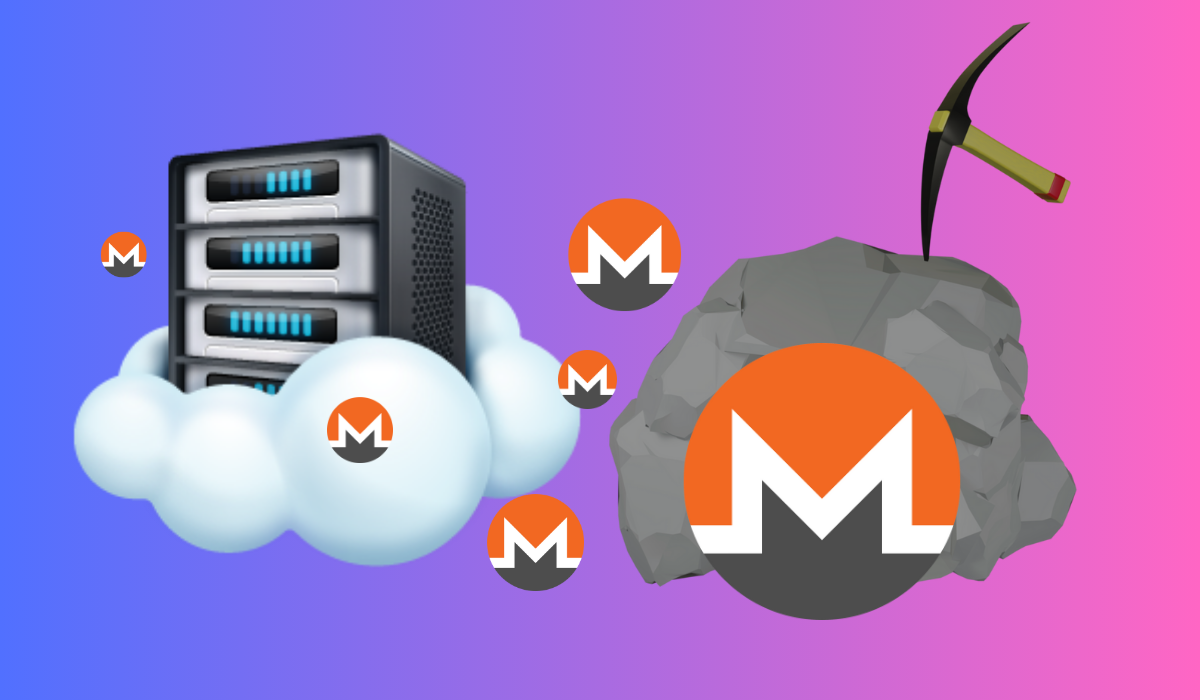While the idea of mining Monero using XMRig on free online virtual machines may sound appealing, it’s crucial to approach this with caution and realistic expectations. Cryptocurrency mining has evolved significantly over the years, transitioning from personal computers to specialized mining rigs and now even to cloud-based solutions. With the rise of cryptocurrencies like Bitcoin and Monero, many individuals seek opportunities to mine these digital assets. However, traditional mining setups can be expensive and resource-intensive. Fortunately, cloud computing offers a cost-effective alternative through services like free online virtual machines.Here’s a breakdown of the key points to consider.
Challenges and limitations:
- Limited Resources: Free VMs typically offer minimal CPU and memory, which are insufficient for profitable Monero mining. The hashrate you’ll achieve will likely be very low, resulting in negligible earnings.
- Short Lifespans: Free VMs often have usage limitations or time restrictions, interrupting the mining process and hindering any progress.
- Platform Restrictions: Many online VM providers explicitly prohibit cryptocurrency mining in their terms of service. Engaging in such activities could lead to account suspension or termination.
- Security Concerns: Running mining software on a free VM exposes you to potential security risks. The platform might be vulnerable to attacks, compromising your data and privacy.
Alternative Approaches:
If you’re interested in mining Monero, consider these more viable options:
- Pool Mining: Join a mining pool to combine your resources with other miners and increase your chances of earning rewards.
- Cloud Mining: Rent mining hardware from cloud mining services. This eliminates the need for personal hardware but involves upfront costs and risks.
- Optimize Hardware: Invest in dedicated mining hardware like ASICs for a significant boost in hashrate and potential profitability.
Additional Factors:
- Monero Network Difficulty: The Monero network difficulty adjusts dynamically, influencing mining profitability.
- Electricity Costs: Consider your electricity costs, as mining can be energy-intensive.
- Market Volatility: Cryptocurrency prices are volatile, impacting the value of your mining rewards.
Understanding XMRig
Before diving into the setup process, it’s essential to understand XMRig and its functionalities. XMRig is an open-source, high-performance Monero (XMR) CPU miner. It’s designed to efficiently mine Monero and other CryptoNight-based cryptocurrencies using CPU resources. XMRig is favored by many miners for its simplicity, stability, and effectiveness in generating hash power.
Choosing a Free Online Virtual Machine Provider
Several cloud computing platforms offer free virtual machines suitable for running XMRig. Providers like Google Cloud Platform, Amazon Web Services (AWS), Microsoft Azure, and Oracle Cloud provide free tiers or trial credits that allow users to deploy virtual machines at no cost. For this guide, we’ll use Google Cloud Platform’s free tier as an example.
Setting Up a Google Cloud Platform Account
- Create an Account: Visit the Google Cloud Platform website and sign up for an account. You may need to provide billing information, but Google offers a generous free tier with $300 in credits valid for 12 months.
- Enable Billing: Even though you’re using the free tier, Google requires you to enable billing to verify your identity and prevent abuse. However, you won’t be charged unless you exceed the free tier limits.
- Access the Console: Once your account is set up, access the Google Cloud Platform console.
Deploying a Virtual Machine
- Navigate to Compute Engine: In the Google Cloud Platform console, navigate to the Compute Engine section.
- Create a Virtual Machine Instance: Click on the “Create” button to deploy a new virtual machine instance.
- Configure Instance Settings: Choose a name for your instance, select a region, and choose the machine type. For this purpose, select a machine type that falls within the free tier limits, such as a f1-micro instance.
- Configure Boot Disk: Choose a boot disk with your preferred operating system. Ubuntu is a popular choice for its ease of use and compatibility with XMRig.
- Allow HTTP and HTTPS Traffic: In the Firewall section, ensure that HTTP and HTTPS traffic are allowed to enable communication with the XMRig mining pool.
- Deploy the Instance: Click on the “Create” button to deploy your virtual machine instance.
Installing and Configuring XMRig
- SSH into the Virtual Machine: Once the virtual machine is deployed, SSH into it using the provided terminal or an SSH client like PuTTY.
- Update System Packages: Run the following commands to update the package list and upgrade installed packages:
bash
sudo apt update
sudo apt upgrade
- Install XMRig: Download and install XMRig from the official GitHub repository. Use the following commands to clone the repository and build XMRig:
bash
sudo apt install git build-essential cmake libuv1-dev libssl-dev libhwloc-dev
git clone https://github.com/xmrig/xmrig.git
cd xmrig
mkdir build
cd build
cmake ..
make -j$(nproc)
- Configure XMRig: Edit the
config.jsonfile to specify your mining pool, wallet address, and other settings. Save the file once you’ve made the necessary changes.
Start Mining
With XMRig configured, you’re ready to start mining Monero. Execute the following command to start XMRig:
bash
./xmrig
Monitor your mining progress through the terminal output or by accessing the mining pool’s dashboard using your web browser.
Conclusion
Mining Monero with XMRig on free online VMs is impractical and unlikely to yield meaningful results. Explore alternative mining approaches or consider other ways to participate in the Monero ecosystem, such as trading or investing.
By leveraging free online virtual machines and tools like XMRig, individuals can engage in cryptocurrency mining without the need for expensive hardware. However, it’s important to consider factors such as electricity costs, mining pool fees, and the volatility of cryptocurrency markets before embarking on mining ventures. Additionally, always adhere to the terms of service of cloud computing providers and ensure compliance with local regulations regarding cryptocurrency mining. With the right approach and understanding, mining in the cloud can be a profitable and accessible endeavor for cryptocurrency enthusiasts.
